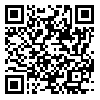Volume 12, Issue 2 (Spring 2022)
PTJ 2022, 12(2): 123-132 |
Back to browse issues page
1- Department of Sport Biomechanics, Faculty of Sport Sciences, Bu-Ali Sina University, Hamedan, Iran.
Abstract: (2646 Views)
Purpose: A proper warm-up method can be used as a strategy to improve the performance of athletes in various sports fields. The present study aimed to compare the effect of two traditional and post-activation potentiation (PAP) warm-up methods on electromyographic variables of lower limb muscles during squat jumps.
Methods: Fourteen trained male athletes randomly performed three different protocols: traditional warm-up method, dynamic post-activation potentiation (PD) by implementing two dynamic half-squat repetitions with 90% 1RM (one rep maximum), and static post-activation potentiation (PS) warm-up by implementing two static half-squat repetitions with 90% 1RM. Vertical jump tests were performed five minutes after implementing each protocol (recovery time). EMG activity of the rectus femoris, vastus lateralis, vastus medialis, biceps femoris, semi-tendinous, medial gastrocnemius, and tibialis anterior was recorded. Also, the co-contraction index and median frequencies were calculated. Repeated measures analysis of variance (ANOVA) was used for data analysis (P<0.05).
Results: The results of this study showed that the activity level of all muscles in the concentric and flight phases, the co-contraction index of the ankle and knee joints, and also median frequencies of rectus femoris, vastus lateralis, semi-tendinous, biceps femoris, and medial gastrocnemius significantly changed in the PD and PS warm-up methods compared to the traditional warm-up method (P≥0.05). Also, the activity level of rectus femoris, vastus medialis, and biceps femoris muscles had a significant difference between the PD and PS compared to the traditional warm-up method in the eccentric phases (P≥0.05).
Conclusion: According to the study results, the PAP warm-up method can improve the performance of athletes in training and competition conditions.
Methods: Fourteen trained male athletes randomly performed three different protocols: traditional warm-up method, dynamic post-activation potentiation (PD) by implementing two dynamic half-squat repetitions with 90% 1RM (one rep maximum), and static post-activation potentiation (PS) warm-up by implementing two static half-squat repetitions with 90% 1RM. Vertical jump tests were performed five minutes after implementing each protocol (recovery time). EMG activity of the rectus femoris, vastus lateralis, vastus medialis, biceps femoris, semi-tendinous, medial gastrocnemius, and tibialis anterior was recorded. Also, the co-contraction index and median frequencies were calculated. Repeated measures analysis of variance (ANOVA) was used for data analysis (P<0.05).
Results: The results of this study showed that the activity level of all muscles in the concentric and flight phases, the co-contraction index of the ankle and knee joints, and also median frequencies of rectus femoris, vastus lateralis, semi-tendinous, biceps femoris, and medial gastrocnemius significantly changed in the PD and PS warm-up methods compared to the traditional warm-up method (P≥0.05). Also, the activity level of rectus femoris, vastus medialis, and biceps femoris muscles had a significant difference between the PD and PS compared to the traditional warm-up method in the eccentric phases (P≥0.05).
Conclusion: According to the study results, the PAP warm-up method can improve the performance of athletes in training and competition conditions.
Type of Study: Research |
Subject:
Special
Received: 2021/07/31 | Accepted: 2022/03/13 | Published: 2022/04/1
Received: 2021/07/31 | Accepted: 2022/03/13 | Published: 2022/04/1
| Rights and permissions | |
 |
This work is licensed under a Creative Commons Attribution-NonCommercial 4.0 International License. |





